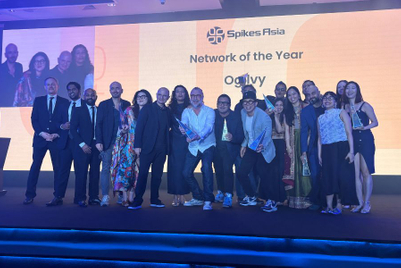
This year's Chinese mid-year shopping festival started in early May and will last until late June. The 2024 edition of the 618 shopping festival, the longest ever, spans over an extended period across various platforms rather than just a day or a week. The duration on different platforms is as follows: Taobao & Tmall (33 days), JD.com (21 days), Pinduoduo (33 days), Douyin (26 days), Quaishou (42 days), and Red/Xiaohongshu (43 days).
Here are some changes and trends that emerged during this period:
Platforms drop pre-sale strategy
In response to customer complaints about the complicated promotions over the past few years, Taobao and Tmall streamlined the shopping experience with the goal of attracting more customers.
Pre-sales have been cancelled and replaced with two shopping windows between May 20 and June 20 on Taobao and Tmall. JD.com has also been reported to have cancelled its pre-sales.
Jacob Cooke, co-founder and CEO of WPIC Marketing + Technologies, said this was the major change of this shopping festival. “Previously, platforms and brands held complex promotion mechanisms, where prices might fluctuate across the sale window, which consumers willingly tracked to secure the best prices,” he said. “Brands would use these months to shed inventory at a discount, but also roll out new product launches amid these consumption spikes”.
He explained that changes happened this year due to “ shifting consumer priorities and brand strategies”. As discounts are now available throughout the year, he said that the cancellation of pre-sales is a smart decision. This is because new shopping formats can encourage spontaneous purchases and robust logistics networks can guarantee fast delivery so consumers don’t want to place pre-orders and then wait over a week for the transaction and shipment to process.
Subramania Bhatt, founder and CEO of China Trading Desk said that brands are now working on the integration of multiple platforms to reach a wider audience and provide a more cohesive shopping experience.
Live streaming continues to benefit brands
Live streaming on various platforms, including JD.com, Douyin, Kuaishou, and Red/Xiaohongshu, played a substantial role in boosting the total gross merchandise volume (GMV) throughout the mid-year shopping festival.
Li Jiaqi's sales on the first day hit 2.6 billion RMB (US$ 359 million) despite the backlash of his comments last year about the prices of Florasis.
Red/Xiaohongshu released data on June 12 to reveal that the order volume for the 618 live streaming surged to 5.4 times the amount of the previous year, while the GMV from store live streaming quintupled compared to the same period last year.
Even though consumers in China are downgrading their consumption in the post-pandemic era, Bhatt emphasised that celebrity endorsements, KOL promotions, and influencer marketing are still some of the top strategies that platforms could adopt to drive consumption.
In his view, platforms can also adopt effective strategies such as offering an enhanced value proposition through discounts and promotional campaigns, as well as implementing customised marketing tailored to specific consumer segments with relevant offers and products.
AI-driven personalisation
Another key trend both industry experts and platforms prioritise is enhancing the AI-driven shopping experience.
Since last year, Alibaba has transformed the digital shopping experience while boosting merchants' operating efficiency with digital retail innovation fuelled by large language model (LLM) Qwen.
Taobao and Tmall platforms have unveiled a suite of AI-powered tools, from personalised consumer-facing chatbots to visual generation applications for merchants.
Bhatt shared an example from this year's 618 event: "Kuaidi 100 leveraged large model capabilities to reconstruct user message classification and automated ticket resolution feature, solving up to 90% of ticket issues, with only 10% of cases requiring human intervention”.
Cleaning appliances and outdoor apparel
Taobao and Tmall data across categories are still the benchmark for ecommerce sales trends, as home appliances such as washing machines and dryer sets, outdoor activity-related goods such as hiking boots and road bikes, interest-based equipment such as mirrorless interchangeable-lens cameras and e-sport equipment, and sun-protection apparel, all recorded 50% year-over-year growth.
In the sports and outdoor category, brands like Nike, Fila (a subsidiary of Anta), Adidas, Lululemon, Anta, and Lining lead the pack according to the preliminary sales data released by Tmall in early June.
More Chinese brands are becoming popular
The beauty sector continues to be a successful category as Proya (a Chinese beauty brand), Lancôme, L’Oréal, and Estee Lauder exceeded a GMV of RMB100 million (US$13.8 million) within the first 30 minutes of the day. Eight brands, including Amiro, Marubi, Elizabeth Arden, Forest Cabin, Jovs, Fresh, OSM, and JMoon, achieved this milestone for the first time, with the majority being emerging C-beauty brands.
Bhatt said that rising sales in the beauty category on Pinduoduo increased by over 80% year-on-year, and that the number of beauty merchants grew by 105%.
The ‘fatigue’ of a long promotional period
As reported by Chinese media last year, the promotional duration for ecommerce platforms extended to about 90 days, which is a quarter of a year.
A survey conducted by Chinese media, which had 5,681 participants, revealed that nearly 50% (2833 people) preferred a one-day duration, while around 27% (1558 people) opted for a three- to five-day period.
In another survey, 25% of the respondents felt that a one- to three3-day duration is the most straightforward solution for ecommerce platform promotions. Meanwhile, 43% believed that while three days is too brief, a seven-day duration is more suitable. Additionally, 25% of the respondents voted for two weeks. However, a significant 93% of respondents agreed that promotional periods should not extend beyond two weeks.
Cooke said that with discounts available year-round, buzz around 6.18 has also diminished. “Consumers are still willing to spend, and there’s just less of a ‘craze’ than we’ve seen in previous years,” he said.


.jpg&h=334&w=500&q=100&v=20250320&c=1)

+(1).jpg&h=334&w=500&q=100&v=20250320&c=1)
.jpg&h=334&w=500&q=100&v=20250320&c=1)

.jpg&h=334&w=500&q=100&v=20250320&c=1)

.jpeg&h=334&w=500&q=100&v=20250320&c=1)
.jpg&h=334&w=500&q=100&v=20250320&c=1)



.png&h=268&w=401&q=100&v=20250320&c=1)




